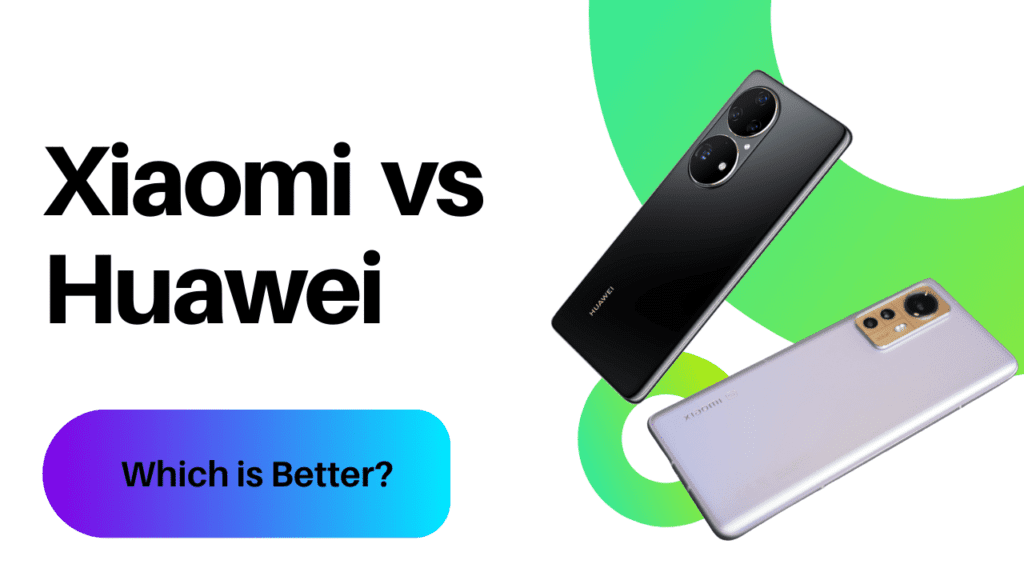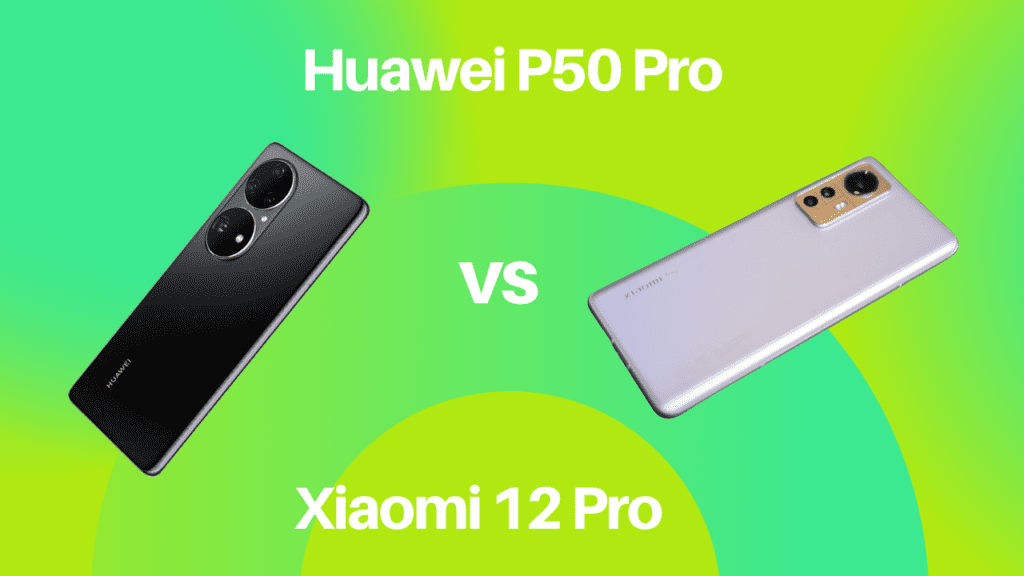

- About Xiaomi
- About Huawei
- Xiaomi vs Huawei: Which is Better?
- Xiaomi vs Huawei: Price Comparison
- Xiaomi vs Huawei: Software and UI Comparison
- On a Final Note
- Frequently Asked Questions
I was intrigued by the prospect of a Xiaomi vs. Huawei showdown. So, after comparing the two brands and considering various features, I’ve arrived at a verdict.
If you’re stuck at a crossroads trying to decide which brand to go for in your next purchase, this article is for you.
Tech giants Xiaomi and Huawei are two of China’s biggest smartphone manufacturers and are both major players in the global smartphone market.
But when it comes to flagship devices, Huawei is in a league of its own, while Xiaomi is the king of the midrange device market.
Also read: Is Xiaomi Better Than Samsung?
About Xiaomi
Ever since its first smartphone was released in 2011, Xiaomi has steadily dominated the smartphone market, sitting behind Samsung as the second-largest manufacturer of smartphones in the world.
In 2015, Xiaomi started developing a wide range of consumer electronics like televisions, flashlights, vacuum cleaners, and air purifiers.
About Huawei
Huawei is not just a major player in the consumer electronics market. It also dominates the telecom equipment market and offers a range of solutions to global businesses and mobile service providers.
In 2018, they became the second-largest manufacturer of smartphones in the world, behind Samsung, and in 2020, Huawei surpassed Apple and Samsung for the number of smartphones shipped worldwide. A feat that was due to the COVID crisis.
Xiaomi vs Huawei: Which is Better?
For the purpose of this comparison, we’ll be putting their two most popular phones under the spotlight. We’re talking about the Xiaomi 12 Pro and Huawei P50 Pro.


Xiaomi 12 Pro vs Huawei P50 Pro: Specifications Comparison
| Specifications | Xiaomi 12 Pro | Huawei P50 Pro | Winner |
|---|---|---|---|
| Release Date | April 2022 | August 2021 | Xiaomi |
| Weight | 205g | 195g | Huawei P50 Pro |
| Dimensions | 163.6 x 74.6 x 8.2mm | 158.8 x 72.8 x 8.5mm | Xiaomi 12 Pro |
| OS | Andriod 12 | EMUI 12 (Android 10) | Xiaomi |
| Screen Size | 6.75 -inch | 6.6-inch | Xiaomi |
| Resolution | 1440 x 3200 | 1228 x 2700 | Xiaomi |
| CPU | Snapdragon 8 Gen 1 | Snapdragon 888 | Xiaomi |
| RAM | 8GB / 12 GB | 8GB / 12GB | Tie |
| Storage | 128GB / 256GB | 128GB / 256GB | Tie |
| Battery | 4600 mAh | 4360mAh | Xiaomi |
| Rear Camera | 50MP (wide) + 50MP (ultrawide, 115-degree) + 50MP (telephoto, 2x optical) | 50 MP (wide) 13 MP Ultra-Wide Angle Camera 64 MP Telephoto | Xiaomi |
| Front Camera | 32MP | 13MP | Xiaomi |
When it comes to specifications, the Xiaomi 12 Pro totally dominates the Huawei P50 Pro. Its superior processor and graphics make it perfect for high-quality games.
The 12 Pro also comes with a larger screen and a longer-lasting battery.
The Huawei P50 Pro and other newer Huawei devices don’t have Google Play support as they run on Huawei’s Harmony OS.
WINNER: XIAOMI
It is worth noting, however, that this is just a comparison of their two most popular phones in 2022.
Xiaomi is no match for Huawei in the number of high-end devices manufactured, as Xiaomi is the king of mid-range devices.
Also Read: Top 10 Most In Demand Tech Skills in 2024
Xiaomi vs Huawei: Price Comparison
Huawei devices are generally more expensive than Xiaomi’s. The Huawei P50 Pro costs around $830-850, over $200 more than the superior phone: Xiaomi 12 Pro.
Now I know you wonder why the superior phone costs less, and here’s an explanation for it:
Xiaomi phones cost less because Xiaomi integrates advertisements in their phones.
This makes them able to mark their phones at cheaper costs because of the ad revenue, even if many of their models have quite outstanding features and performance that would command a higher price in the market.
It’s a clever strategy, but it can irritate certain people who have strong feelings against bloatware and advertisements.
On the other hand, Huawei phones do not come with built-in advertisements, and as a result, they generally cost more even though their specifications are very similar.
Personally, I have no problems with bloatware and ads (there are ways to get rid of them) if I get to save $200.
Xiaomi vs Huawei: Software and UI Comparison
The MIUI operating system used by Xiaomi phones is superior to Huawei’s EMUI. Huawei recently created the Harmony Operating System, which mimics Android version 10, as a response to the ban meted out to it by the Trump Administration in 2019, which prevents it from using Google Services.
Huawei phones don’t come with Google Play support, so they don’t have access to Google’s complete range of downloadable apps.
As a result of this, YouTube, Google Play Store, Google Maps, Google Meet, Gmail, etc. are not legally supported on Huawei devices.
However, Xiaomi phones don’t have this problem, so you can use Google apps as much as you like on them.
WINNER: XIAOMI
On a Final Note
Xiaomi takes it home in the Xiaomi vs Huawei debate.
While there is not a huge gulf of difference between the hardware of Xiaomi and Huawei devices, the software restrictions make Huawei an unattractive choice at this point for regular users, so until things cool off between Google and Huawei, it might be best to look elsewhere.
Which other phone brands would you like us to reveal next? Let us know in the comments below.
Frequently Asked Questions
Does Huawei make Redmi?
No. Xiaomi manufactures the Redmi series. Despite being such a well-known name worldwide, Redmi is actually a Xiaomi sub-brand.
Redmi phones are generally made cheaper with a focus on affordability.
The company’s flagship brand is Xiaomi.
Is Xiaomi Part of Huawei?
No. Xiaomi and Huawei are two independent phone manufacturers.
Which Has the Better Camera Quality Between Huawei and Xiaomi?
Generally speaking, Huawei devices come with a super sharp camera quality that is on par with the Samsungs and iPhones of this world. Only very few Xiaomi flagship devices can compare with Huawei’s ingenuity regarding Cameras.
Which Has the Better Battery Quality Between Huawei and Xiaomi?
This is a tie as both companies produce devices in the 4000mAh – 5000mAh range. There is no significant difference in the quality of their batteries.
How long a battery lasts is down to usage and software.



